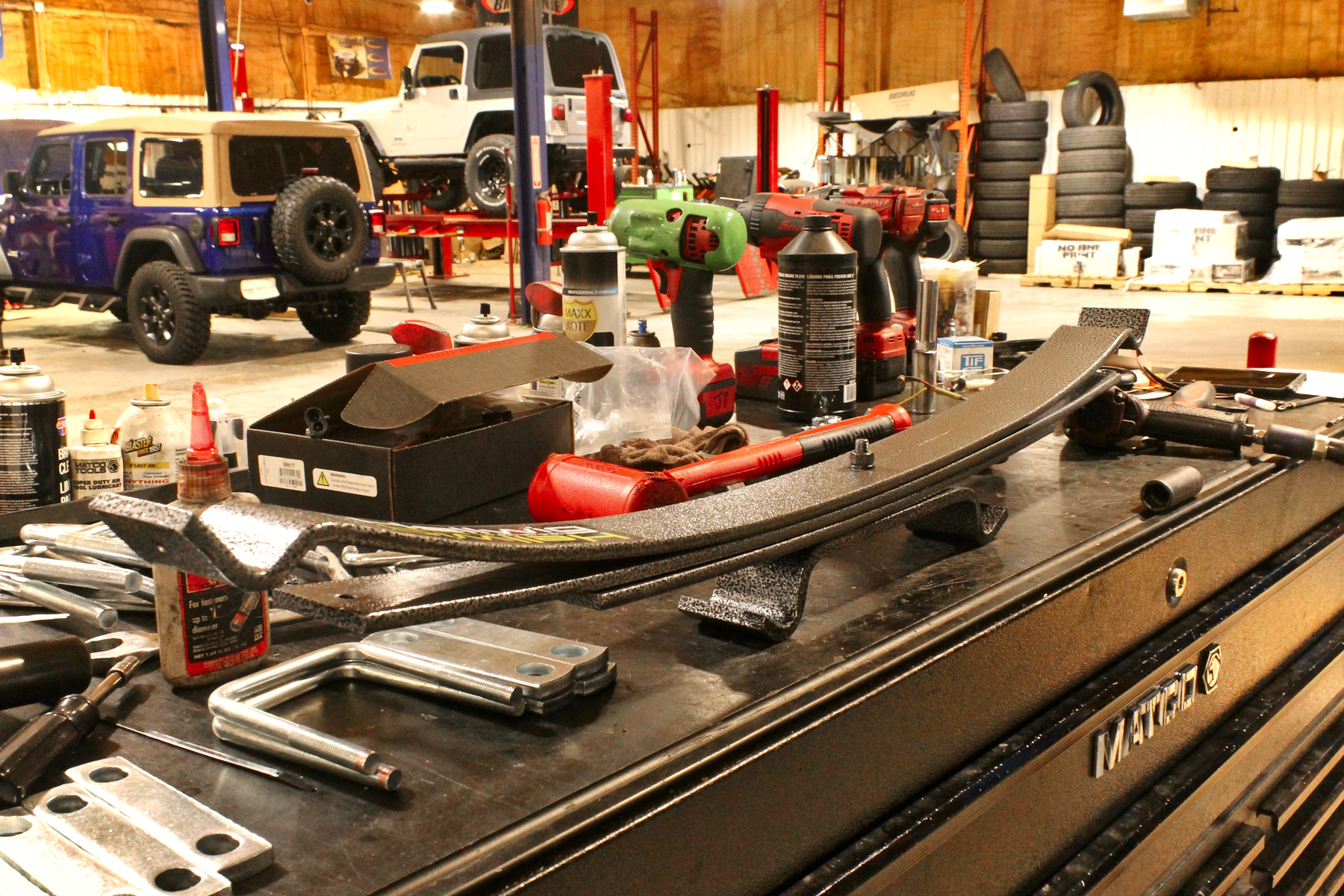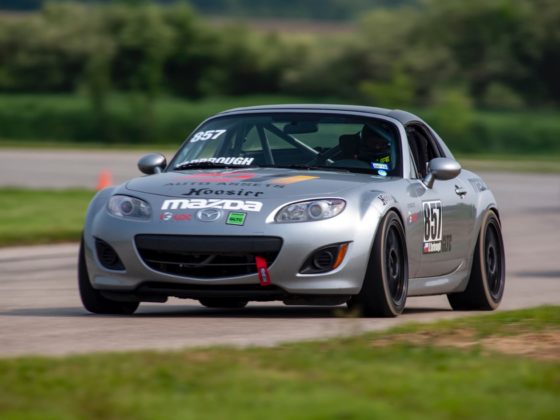
The E-series vans came in a number of configurations and trims. There were pure 2-passenger cargo vans, super extended 15-passenger versions, and even some 4WD ones (which are extremely rare and are worshipped by preppers). Figuring out your specific trim and options can be a bit of a pain.
In the case of my van, there never was a rear swaybar, so this was a pure addition. Here the guys from SOS get the brackets attached to the rear live axle before hooking up the endlinks.

Again, a pretty simple installation, other than the size of things. You can see the big ol’ brake drum, and also the leaf springs. And, speaking of leaf springs, this is where Hellwig got its start.

Hellwig’s first product back in the 40s was a helper spring for cars sagging under heavy weight. And, when you’re towing all the time, sure enough, that puts a bunch of heavy weight on the back. Now granted we are not towing a 5th-wheel or gooseneck-type trailer here, but a fully-loaded two-horse trailer and supplies is topping out at around 6,000-7,000lbs, and even the open steel one-car trailer is in that same range. 7,000lbs behind the van and another few thousand pounds of tools and supplies in the van, and you are talking serious weight.
The helper springs… help! Here they first get stacked up to then get installed on top of the existing Ford leaf spring stack.


Again, this isn’t a hard job, it just requires big tools and a little patience. And, if your vehicle originally came from up north like this one did, probably dealing with some rusty bolts and yucky hardware.
So, what’s the verdict?




8 comments
This thing is hideous and awesome, shitty aluminum sidesteps and all! I admire your love for the 7.3. Once I drove the 6.8 V10 version though….I was sold.
I smashed a 6.8 V10 with my Whippled 350 Vortec on 4psi. Supposedly they wake up with a tune, but if they’re anything like the V8s of the time then no thanks.
I really like the Ford 7.3 diesel myself. An exhaust, intercooler, fuel controller and the Garrett upgrade turbo and it flies and gets great mileage. I could get up to 24 mpg towing! The 6.7 Powerstroke is sorta lame, way worse fuel economy and less of everything but just off idle grunt.
It looks handy ot travel to anywhere. But, it’s quite small to sleep comfortably
This is pretty sick. I have already fallen for the dajiban, practical cheap and fun tow rigs are the way to go.
The 7.3 seems more robust and less problematic than the 6.0 PSD that followed. Which I had in an Excursion. I miss that rig but it had electrical gremlins I didn’t have patience and money for at the time.
P.s. No way anyone over 5’9 is standing in there, that made me laugh on its own, unless the floor is dropped.
I strongly disagree on rear brakes being less important than front in a tow pig. See how your nose points up with a load? Which end do you think is going to lock first with a trailer out back? My dually will lock the rears before the fronts empty so you have to be on your toes but isn’t that why you racecar in the first place?
I’m not sure I understand the physics behind that one. Adding weight increases the force required to overcome the coefficient of friction. See:
https://www.school-for-champions.com/science/friction_equation.htm#.Xbiu6XVKiV4
You can demonstrate this yourself. Lightly drag an eraser on a stable and immovable surface. Then push really hard on the eraser and try to drag it. It’s harder to drag the eraser that’s being pressed into the surface more.
If your argument is that the nose is pointing up with load, that means the front is unweighted, which means it would require less force to overcome the coefficient of friction between tire and road, which would make the fronts lock up first. It would mean the rear is carrying more load, and that the force required to overcome friction is higher, and that the rears would lock up later.
On a race car this is similar. You have higher front bias because the front does more work and the rear unloads under braking.
If your truck is locking up four rear tires before the front two tires when towing, I am thinking that your rig needs some servicing.
Either that or I’m completely misunderstanding my highschool physics.
You just agreed with me without realizing it.